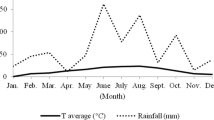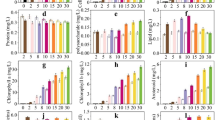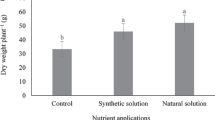Abstract
The heightened awareness concerning environmental preservation, resource scarcity, food safety, and nutrition has engendered the need for a more sustainable and resource-efficient agricultural production system. In this context, microalgae offer the potential to recover nutrients from waste streams and subsequently use the microalgal biomass as a sustainable slow-release fertilizer. The aim of this study was to assess microalgal bacterial flocs treating aquaculture wastewater and marine microalgae as organic slow-release fertilizers for tomato cultivation. Comparable plant growth was observed using microalgal and commercial organic fertilizer treatments. Furthermore, the microalgal fertilizers improved the fruit quality through an increase in sugar and carotenoid content, although a lower tomato yield was obtained. An economic evaluation indicates the economic feasibility of the microalgae-based fertilizers. Further research is required to optimize the microalgae-based fertilizer composition.






Similar content being viewed by others
References
Agehara S, Warncke DD (2005) Soil moisture and temperature effects on nitrogen release from organic nitrogen sources. Soil Sci Soc Am J 69:1844–1855
Ahmed S, Klassen TN, Keyes S, Daly M, Jones DL, Mavrogordato M, Sinclair I, Roose T (2015) Imaging the interaction of roots and phosphate fertiliser granules using 4D X-ray tomography Plant Soil.. doi:10.1007/s11104-015-2425-5
Auction Hoogstraten SCRL (2015) Statistisch jaaroverzicht trostomaten 2012–2013 (Statistical annual review of the tomato sales). Veiling Hoogstraten cvba. www.veilinghoogstraten.be.
Borgognone D, Colla G, Rouphael Y, Cardarelli M, Rea E, Schwarz D (2013) Effect of nitrogen form and nutrient solution pH on growth and mineral composition of self-grafted and grafted tomatoes. Scient Hortic 149:61–69
Cai T, Park SY, Li YB (2013) Nutrient recovery from wastewater streams by microalgae: status and prospects. Renew Sust Energ Rev 19:360–369
Chaves B, De Neve S, Hofman G, Boeckx P, Van Cleemput O (2004) Nitrogen mineralization of vegetable root residues and green manures as related to their (bio)chemical composition. Eur J Agron 21:161–170
Chen J (2006) The combined use of chemical and organic fertilizers and/or biofertilizer for crop growth and soil fertility. In: International workshop on sustained management of the soil-rhizosphere system for efficient crop production and fertilizer use. Land Development Department Bangkok, Thailand, p 20
De Swaef T, Verbist K, Cornelis W, Steppe K (2012) Tomato sap flow, stem and fruit growth in relation to water availability in rockwool growing medium. Plant Soil 350:237–252
Din E (2012) 13041, “Soil improvers and growing media—determination of physical properties—dry bulk density, air volume, water volume, shrinkage value and total pore space”. Beuth, Berlin
Gabriels D, Hartmann R, Verplancke H, Cornelis W, Verschoore P (1998) Werkwijzen voor grondanalyses. Ghent University, Ghent
Greenberg A, Clesceri L, Eaton A (1992) Standard methods for the examination of water and wastewater. American Public Health Association, Washington DC
Heeb A, Lundegårdh B, Ericsson T, Savage GP (2005) Nitrogen form affects yield and taste of tomatoes. J Sci Food Agric 85:1405–1414
Jakobsen ST (1993) Interaction between plant nutrients: III. Antagonism between potassium, magnesium and calcium. Acta Agric Scand B 43:1–5
Jourquin S, Maertens E, Deuninck J, D’hooghe J (2013) Het bedrijfsinkomen van de tomatenteler: resultaten van bedrijven uit het landbouwmonitoringsnetwerk (The income of the tomato famer: survey results from the agricultural monitoring network). Beleidsdomein Landbouw en Visserij, Brussels
Kobayashi M, Kobayashi M (1995) Waste remediation and treatment using anoxygenic phototrophic bacteria. In: Blankenship R, Madigan M, Bauer C (eds) Anoxygenic photosynthetic bacteria, vol 2. Advances in photosynthesis and respiration. Springer, Netherlands, pp 1269–1282
Kondo K, Nakata N, Nishihara E (2010) Effect of the purple non-sulfur bacterium (Rhodobacter sphaeroides) on the Brix, titratable acidity, ascorbic acid, organic acid, lycopene and β-carotene in tomato fruit. Food Agric Environ 8:743–746
Kumari R, Kaur I, Bhatnagar AK (2011) Effect of aqueous extract of Sargassum johnstonii Setchell & Gardner on growth, yield and quality of Lycopersicon esculentum Mill. J Appl Phycol 23:623–633
Lachman J, Orsak M, Pivec V, Kratochvilova D (2001) Anthocyanins and carotenoids-major pigments of roses. Horticultural Science-UZPI, Czech Republic 28:33–39
Lichtenthaler HK (1987) Chlorophylls and carotenoids: pigments of photosynthetic biomembranes. Methods Enzymol 148:350–382
Magán JJ, Gallardo M, Thompson RB, Lorenzo P (2008) Effects of salinity on fruit yield and quality of tomato grown in soil-less culture in greenhouses in Mediterranean climatic conditions. Agric Water Manag 95:1041–1055
Mehlich A (1984) Mehlich 3 soil test extractant: a modification of Mehlich 2 extractant. Comm Soil Sci Plant Anal 15:1409–1416
Mulbry W, Westhead EK, Pizarro C, Sikora L (2005) Recycling of manure nutrients: use of algal biomass from dairy manure treatment as a slow release fertilizer. Bioresour Technol 96:451–458
Mulbry W, Kondrad S, Pizarro C (2007) Biofertilizers from algal treatment of dairy and swine manure effluents. J Veg Sci 12:107–125
Norsker N-H, Barbosa MJ, Vermuë MH, Wijffels RH (2011) Microalgal production—a close look at the economics. Biotechnol Adv 29:24–27
Papadopoulos AP (1991) Growing greenhouse tomatoes in soil and in soilless media. Communications Branch, Agriculture, Canada
Sonneveld C, Voogt W (2009) Plant nutrition of greenhouse crops vol 1. Springer, Berlin
Spolaore P, Joannis-Cassan C, Duran E, Isambert A (2006) Commercial applications of microalgae. J Biosci Bioeng 101:87–96
Stadler C, von Tucher S, Schmidhalter U, Gutser R, Heuwinkel H (2006) Nitrogen release from plant-derived and industrially processed organic fertilizers used in organic horticulture. J Plant Nutr Soil Sci 169:549–556
Sutton MAB A, Howard CM, Bekunda MGB, de Vries W, van Grinsven HJM et al (2013) Our nutrient world: the challenge to produce more food and energy with less pollution. NERC/Centre for Ecology & Hydrology, Edinburgh, p 114
Tripathi RD, Dwivedi S, Shukla MK, Mishra S, Srivastava S, Singh R, Rai UN, Gupta DK (2008) Role of blue green algae biofertilizer in ameliorating the nitrogen demand and fly-ash stress to the growth and yield of rice (Oryza sativa L.) plants. Chemosphere 70:1919–1929
Van Den Hende S, Beelen V, Bore G, Boon N, Vervaeren H (2014a) Up-scaling aquaculture wastewater treatment by microalgal bacterial flocs: from lab reactors to an outdoor raceway pond. Bioresour Technol 159:342–354
Van Den Hende S, Claessens L, De Muylder E, Boon N, Vervaeren H (2014) Microalgal bacterial flocs originating from aquaculture wastewater treatment as diet ingredient for Litopenaeus vannamei (Boone). Aquac Res: doi:10.1111/are.12564
Vox G, Teitel M, Pardossi A, Minuto A, Tinivella F, Schettini E (2010) Sustainable greenhouse systems. In: Salazar A, Rios I (eds) Sustainable agriculture: technology, planning and management. Nova Science Publishers, New York, pp 1–79
Acknowledgments
J.C. was supported by a PhD grant from the Institute for the Promotion of Innovation by Science and Technology in Flanders (IWT-Vlaanderen, SB-101187). O.G. was supported by the project grant IWT Baekeland mandate 120200. S.V.D.H. was supported by the INTERREG IVB NWE program, the Flemish Government, and Province West-Flanders within the EnAlgae project. The authors thank Stephen J. Andersen, Francis Meerburg, Jochen Hanssens, Tom De Swaef, and Alessia Landi for inspiring scientific discussions.
Author information
Authors and Affiliations
Corresponding author
Additional information
Joeri Coppens and Oliver Grunert contributed equally to this work.
Electronic supplementary material
Below is the link to the electronic supplementary material.
ESM 1
(DOCX 37 kb)
Rights and permissions
About this article
Cite this article
Coppens, J., Grunert, O., Van Den Hende, S. et al. The use of microalgae as a high-value organic slow-release fertilizer results in tomatoes with increased carotenoid and sugar levels. J Appl Phycol 28, 2367–2377 (2016). https://doi.org/10.1007/s10811-015-0775-2
Received:
Revised:
Accepted:
Published:
Issue Date:
DOI: https://doi.org/10.1007/s10811-015-0775-2




